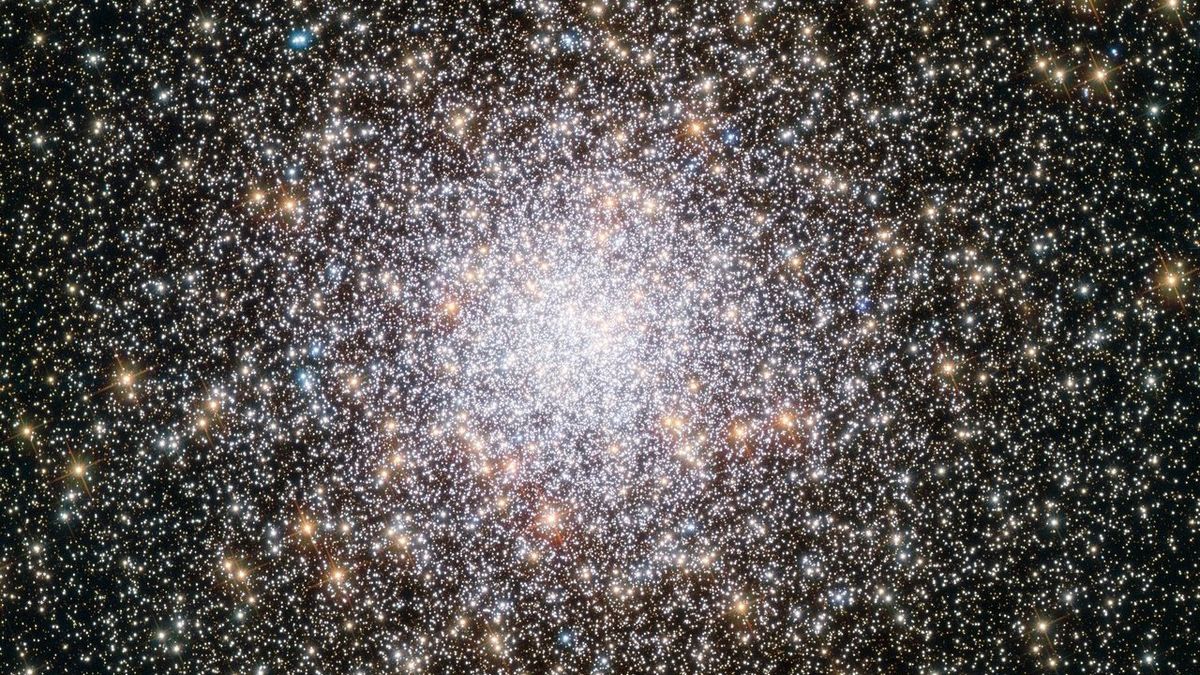Welcome to DU!
The truly grassroots left-of-center political community where regular people, not algorithms, drive the discussions and set the standards.
Join the community:
Create a free account
Support DU (and get rid of ads!):
Become a Star Member
Latest Breaking News
Editorials & Other Articles
General Discussion
The DU Lounge
All Forums
Issue Forums
Culture Forums
Alliance Forums
Region Forums
Support Forums
Help & Search
Science
Related: About this forumJames Webb Telescope finds evidence of 'celestial monster' stars the size of 10,000 suns lurking at
James Webb Telescope finds evidence of 'celestial monster' stars the size of 10,000 suns lurking at the dawn of timeBy Ben Turner published about 5 hours ago
The James Webb Space Telescope has found key chemical fingerprints of supermassive stars just 440 million years after the Big Bang.

Globular clusters like this one contain hundreds of thousands to millions of stars -- including some of the oldest in the universe. (Image credit: NASA Goddard)
The James Webb Space Telescope (JWST) has discovered the first evidence that millions of supermassive stars up to 10,000 times the mass of the sun may be hiding at the dawn of the universe.
Born just 440 million years after the Big Bang, the stars could shed light on how our universe was first seeded with heavy elements. Researchers, who dubbed the giant stars "celestial monsters," published their findings May 5 in the journal Astronomy and Astrophysics.
"Today, thanks to the data collected by the James Webb Space Telescope, we believe we have found a first clue of the presence of these extraordinary stars," lead study author Corinne Charbonnel, an astronomy professor at the University of Geneva in Switzerland, said in a statement.
The researchers found chemical traces of the gigantic stars inside globular clusters — clumps of tens of thousands to millions of tightly packed stars, many of which are among the most ancient to have ever formed in our universe. Roughly 180 globular clusters dot our Milky Way galaxy and, because they are so old, serve astronomers as windows through time into the earliest years of our universe.
More:
https://www.livescience.com/space/cosmology/james-webb-telescope-finds-evidence-of-celestial-monster-stars-the-size-of-10000-suns-lurking-at-the-dawn-of-time
2 replies
 = new reply since forum marked as read
Highlight:
NoneDon't highlight anything
5 newestHighlight 5 most recent replies
= new reply since forum marked as read
Highlight:
NoneDon't highlight anything
5 newestHighlight 5 most recent replies
James Webb Telescope finds evidence of 'celestial monster' stars the size of 10,000 suns lurking at (Original Post)
Judi Lynn
May 2023
OP
PoindexterOglethorpe
(27,672 posts)1. Thank you for posting this.
These are the kinds of things I often wind up discussing with My Son The Astronomer.
I believe that the kinds of stars mentioned in the article are Population 3 stars, the very earliest ones formed, and none of them exist any more. But isn't it amazing that we can look back in time and see them?
Deuxcents
(21,639 posts)2. Fantastic !